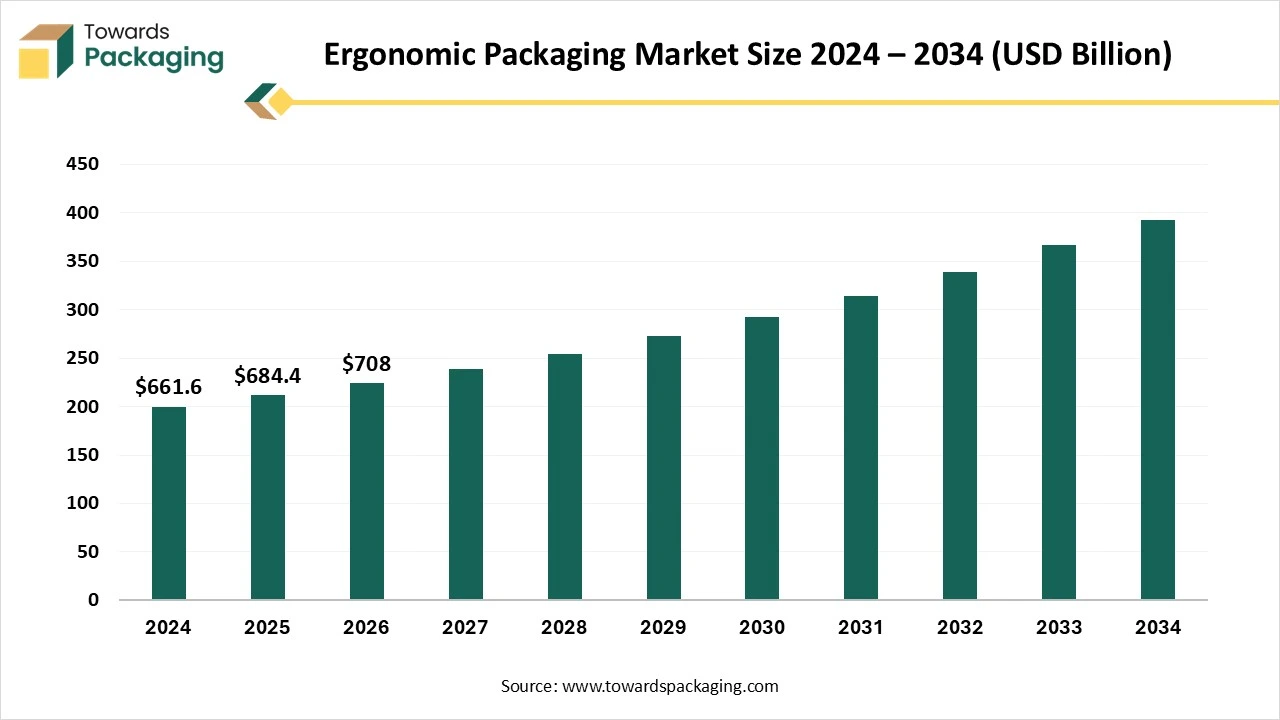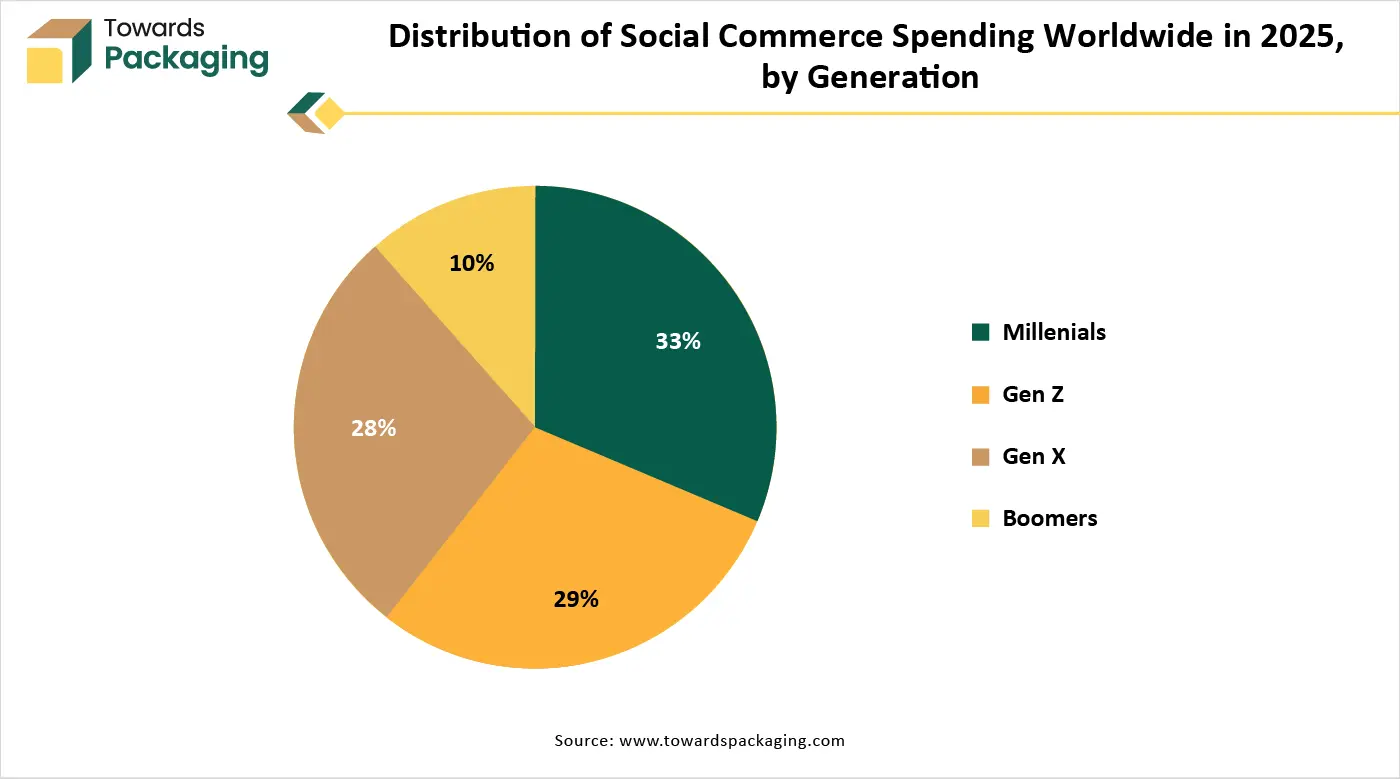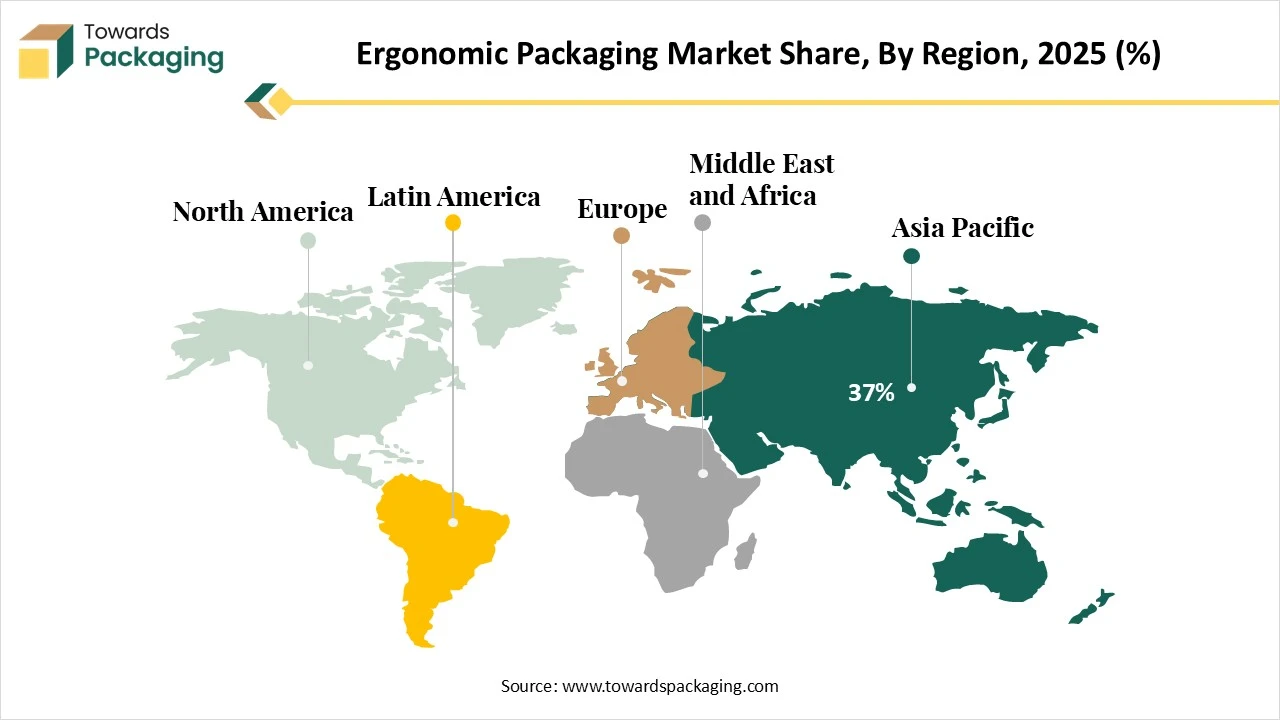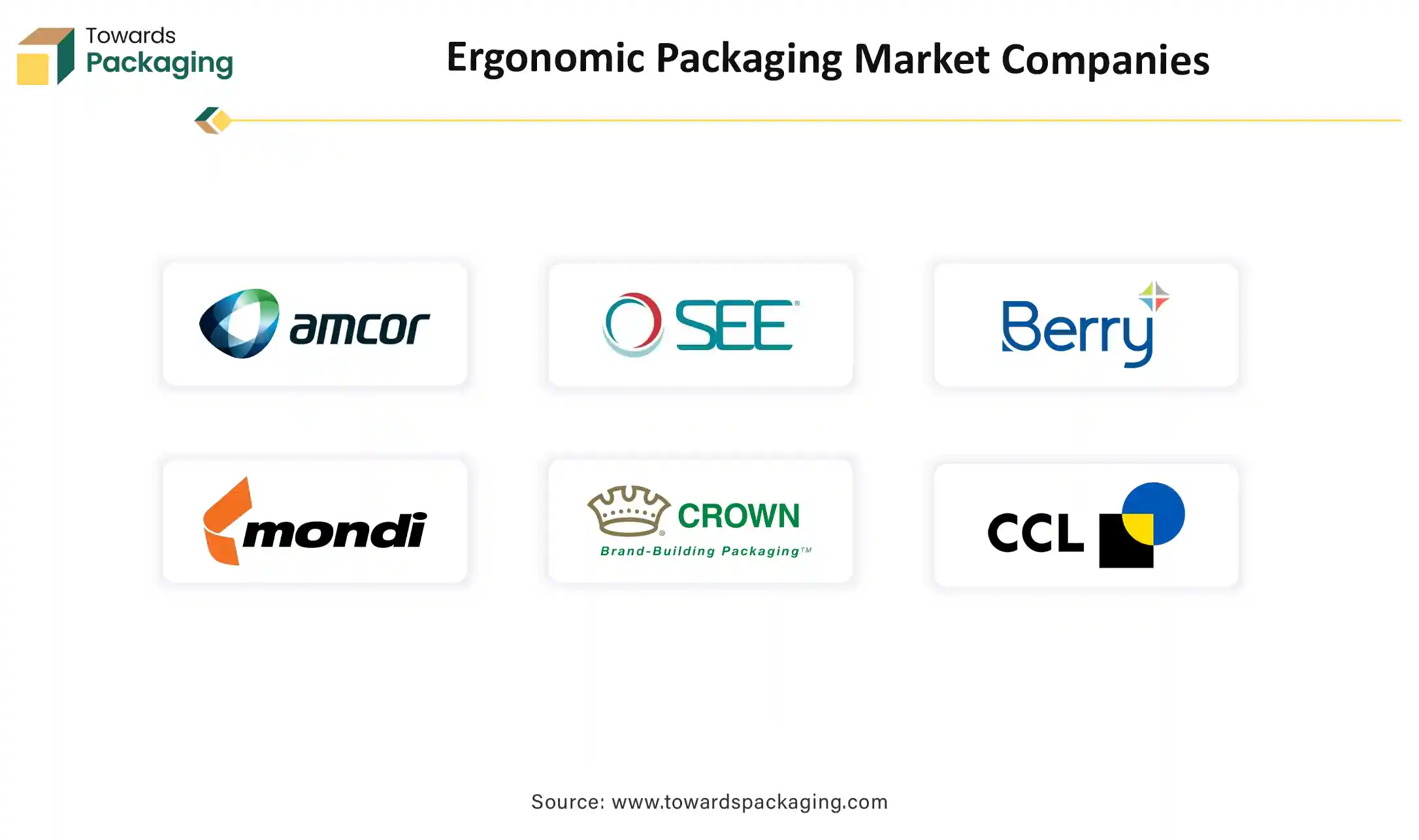November 2025
The global ergonomic packaging market is booming, poised for a revenue surge into the hundreds of millions from 2025 to 2034, driving a revolution in sustainable transportation. The key players operating in the market are focused on adopting inorganic growth strategies like acquisition and merger to develop advance technology for manufacturing ergonomic packaging.
The ergonomic packaging market is growing rapidly due to rising consumer demand for user-friendly, accessible, and convenient packaging. It enhances functionality by improving grip, ease of opening, and handling especially benefiting the elderly and people with disabilities. Sectors like personal care, pharmaceutical, and food & beverages are driving adoption. Companies are focusing on inclusive design and innovation to improve consumer experience and reduce product wastage. Sustainability trends are also encouraging the use of eco-friendly ergonomic materials and reusable formats.

| Metric | Details |
| Market Drivers | - Growth in e-commerce and convenience culture - Aging population - Rise in inclusive packaging |
| Leading Region | Asia Pacific |
| Top Key Players | Amcor, Sealed Air, Berry Global, Mondi Plc., Crown Holdings, ErgoPack Deutschland GmbH, Packsize International, LLC |
The packaging designed with focus on human comfort, usability, and safety is known as ergonomic packaging. It takes into account how people interact with packaging, aiming to make opening, handling, storing, and disposing of products easier and more efficient. This type of packaging is particularly beneficial for individuals with physical limitations, such as the elderly, people with arthritis, or those with reduced hand strength, by minimizing strain and maximizing convenience.
Ergonomic packaging incorporates features like easy-grip surfaces, lightweight materials, intuitive opening mechanisms (e.g., flip-tops, pull tabs, resealable closures), and clearly labelled instructions. It’s widely used in industries such as pharmaceuticals, personal care, and food & beverages, where user experience and safety are critical.
Beyond convenience, ergonomic packaging also enhances product appeal and consumer satisfaction. It reduces the risk of injury spillage, or product damage during use. With growing awareness around inclusivity and accessibility, more brands are adopting ergonomic design to improve packaging functionality while aligning with universal design principles.
Integration of QR codes, NFC, RFID, and AR enhances user experience by offering product information, freshness indicators, or anti-counterfeiting tools.
Biodegradable, compostable, and monomaterial formats are rising and being used extensively. Refillable or dual-purpose packaging that extends product life is gaining momentum.
Clean, simple layouts with lightweight and easy-to-use formats appeal to consumers and improve functionality. Reducing materials also supports sustainability goals.
Brands leverage digital printing and size-adaptive designs (e.g., right-sized packaging, custom inserts) to create tailored, user-friendly experiences.
Textured surfaces, tactile finishes, pop-up elements, scents, and scratch-and-sniff features elevate unboxing, improving grip and accessibility especially important in ergonomic terms.
Packaging can now sense temperature, moisture, or spoilage and respond using indicators, sensors, or antimicrobial films boosting usability, safety, and ergonomics.
AI integration can significantly enhance the ergonomic packaging industry by enabling smarter, more user-centric designs. Through AI-driven data analysis, companies can assess consumer behaviour, preferences, and physical interactions with packaging to develop solutions tailored for comfort, ease of use, and accessibility. AI can simulate various user scenarios such as elderly individuals or people with disabilities to test and optimize packaging functionality before production.
Additionally, AI-powered design tools can suggest ergonomic shapes, materials, and closure mechanisms based on vast datasets and predictive modelling. In manufacturing, AI enhances precision and reduces waste by automating the creation of complex, customized packaging designs. AI can also be integrated into smart packaging to provide real-time user feedback, detect handling patterns, or suggest product usage tips. Overall, AI helps brands create innovative, inclusive, and sustainable packaging solutions that align with ergonomic principles while improving customer satisfaction and market competitiveness.
Growth in E-commerce and Convenience Culture
As online shopping rises, so does the need for packaging that is easy to open and dispose of without tools or excessive force, driving demand for ergonomic features. As more products are purchased online, the demand for packaging that enhances convenience, protection, and ease of use during unboxing has surged. Ergonomic packaging addresses these needs by offering features like easy-open mechanisms, resealable closures, and lightweight designs that improve the customer experience and reduce frustration. Additionally, e-commerce involves frequent handling and transportation, making it essential for packaging to be both protective and user-friendly. Ergonomic packaging ensures products are not only well-protected but also accessible upon delivery, minimizing damage and return rates.

For instance, in January 2025, according to the data published by the E-commerce council, social media is an essential tool for product marketing and promotion. Customers like supporting and purchasing from these companies, and many businesses, particularly tiny ones, use it to market their goods. Social media also makes it easier for consumer to make purchasing decisions by providing user reviews that inform them about the quality of products. Approximately 4.9. billion people use social media globally. In the U.S., almost 30% internet users have made a direct purchase via social media site. According to projections, social media advertising spending will increase by 4.53% annually between 2023 and 2027. Social media adverting expenditures are expected to reach USD247.30 billion by the end of 2027. With USD 72.33 billion spent on social media ads in 2023, the US spends the most in the product and its packaging.
Limited Awareness Among Small Manufacturers & Incompatibility with Standard Supply Chain
The key players operating in the market are facing issue due to lack of standardization, environmental concerns and incompatibility with standard supply chain. Many small and medium-sized enterprises (SMEs) lack awareness or expertise in ergonomic design principles, preventing widespread adopting across local and regional markets. Ergonomic designs may not always align with automated packaging lines or standard logistics systems, requiring costly adjustments to existing operations.
Adoption of Inclusive Design Across Industries
Brands are increasingly embracing universal design principles to cater to a broader demographic. This opens up opportunities in sectors like pharmaceuticals, personal care, and food where ease of use is critical. The adoption of inclusive design across industries is a significant driver for the growth of the ergonomic packaging industry, as it promotes accessibility, usability, and convenience for all users regardless of age, ability, or physical condition. Inclusive design ensures that packaging is intuitive and easy to interact with, benefiting not only people with disabilities or elderly but also the general consumer base looking for more convenient product experiences. Industries such as pharmaceuticals, personal care, food & beverages, and consumer electronics are increasingly prioritizing inclusive design to meet diverse consumer needs.
The easy grip bottles & containers segment holds a dominant presence in the market as these offers enhanced user convenience and comfort. Easy-grip designs offer improved handling, especially for individuals with limited hand strength, wet hands, or dexterity issues. Features like contoured shapes, textured surfaces, and anti-slip materials make daily product use more comfortable and safe. Sectors like personal care, food & beverages, household cleaners, and healthcare rely heavily on bottles and containers.
Ergonomic, easy-grip formats improve consumer satisfaction and are preferred in these fast moving categories. Brands use ergonomic designs to stand out on shelves and offer a better user experiences. Easy-grip packaging enhances brand perception, often leading to repeat purchases. New materials allow for ergonomic shaping without compromising recyclability or environmental performance. This supports market growth while aligning with sustainability goals.
The singledose pouches & blister packs segment is expected to grow at the fastest rate in the market during the forecast period of 2025 to 2034. Single-dose packaging offers simple, one-time use with no need for measuring or resealing, making it ideal for on-the-go lifestyles. This ease of use is a core ergonomic benefit, especially for individuals with limited mobility or visual impairments. Blister packs and unit-dose pouches ensure accurate dosing, reducing the risk of overdose or misuse especially important in pharmaceuticals, nutraceuticals, and health supplements.
Ergonomically designed blister packs and pouches help seniors and children use products safely and independently, driving demand across age groups. Blister packs offer excellent barrier protection against moisture, light, and contaminants, maintaining product integrity and safety.
The medical tablets, pills & syrups segment accounted for the dominant revenue share of the ergonomic packaging market in 2024. Ergonomic designs, such as easy-peel blister packs or grip-friendly syrup bottles, help patients especially the elderly, children, or those with arthritis open and handle medication easily without assistance. Single-dose blister packs and pre-measured syrup dispensers reduce the risk of dosage errors and help patients adhere to prescribed medication schedules, improving treatment outcomes. Ergonomics packaging often includes tamper-evident seals and unit dose formats, minimizing contamination risks and ensuring product integrity, which is crucial in medical use.
Specially designed no-drip syrups or controlled-pour bottles help prevent wastage, reduce spillage, and make medication usage more manageable for patients caregivers. These benefits make ergonomics packaging a preferred choice in the pharmaceutical industry, promoting patient safety, independence, and improved healthcare experiences.
The healthcare segment dominates the market due to enhanced safety, dosing accuracy and compliance. Ergonomic packaging helps patients follow prescribed dosages accurately. Features like single-dose pouches or blister packs with labelled days/doses reduce the risk of medication errors and improve adherence to treatment. Packaging designed with tamper-evident seals, child-resistant closures, and contamination-proof formats enhances safety and ensures product integrity, crucial for pharmaceuticals and medical devices.
Healthcare products are used by diverse population, including the elderly, patients with limited mobility, version impairment, or reduced hand strength. Ergonomic packaging such as easy-open blister packs, large-print labels, and grip-friendly bottles ensures these users can access their medication independently and safely. As more patients manage chronic conditions at home, ergonomic packaging enables safer self-administration of medications, contributing to better health outcomes.

Asia Pacific region held the largest share of the ergonomic packaging market in 2025, owing to rapid industrialization in the region. Asia Pacific region is experiencing rapid industrial growth, growing healthcare and pharmaceutical sectors, and rising consumer demand for user-friendly products. Countries like China, Japan, and India are investing heavily in innovating packaging technologies that prioritize convenience and accessibility. A large aging population, especially in Japan, fuels demand for easy-to-use packaging solutions.
China Market Trends
China ergonomic packaging market is driven by the massive manufacturing base, advanced packaging technologies, and rapidly expanding e-commerce sector. With a growing middle class and increasing demand for convenient, functional products, manufacturers are focusing on user-friendly designs in personal care, food, and healthcare packaging. Government support for automation and smart packaging also boosts the market.
India Market Trends
India ergonomic packaging market is driven owing to booming pharmaceutical and FMCG sectors, which increasingly require accessible and affordable packaging. A large rural and elderly population drives demand for easy-to-open and safe packaging formats. Additionally, India’s growing startup ecosystem in health-tech and sustainable packaging promotes innovation in ergonomic design.
The Europe market is expanding rapidly due to stringent regulations and inclusive design standards in the region. The European Union enforces strict packaging regulations emphasizing safety, accessibility, and environmental responsibility. Policies such as the European Accessibility Act push companies to adopt ergonomic and inclusive packaging designs, especially in healthcare, personal care, and food sectors. Europe’s well-developed pharmaceutical sector, particularly in Switzerland, Ireland, and Germany, prioritizes patient safety and compliance, making ergonomic blister packs, pill dispensers, and dosing aids essential.
European consumers value ease-of-use, minimalism, and premium user experience. This demand is reflected in growing adoption of ergonomic packaging in daily-use products like cosmetics, household goods, and food & beverages. Europe hosts several leading packaging firms (e.g., Amcor plc, Huhtamaki, DS Smith plc, Storopack), which invest heavily in research and development to create ergonomic, sustainable, and regulatory-compliant solutions.
North America region is seen to grow at a notable rate in the foreseeable future. North American consumers demand packaging that offers ease of use, especially in sectors like food & beverages, personal care, and healthcare. Ergonomic features like easy-open closures, grip-friendly containers, and clear labelling are widely adopted to enhance user experience. The U.S. and Canada have well-established healthcare systems and pharmaceutical industries that prioritize safety, accurate dosing, and patient compliance. Ergonomic packaging such as blister packs, unit-dose systems, and tamper-evident containers are widely used to ensure usability and reliability. Regulations from bodies such as the U.S. FDA and Consumer Product Safety Commission (CPSC) promote the use of packaging that is safe, accessible, and easy to use, particularly for medications, supplements, and medical devices.

November 2025
November 2025
November 2025
November 2025